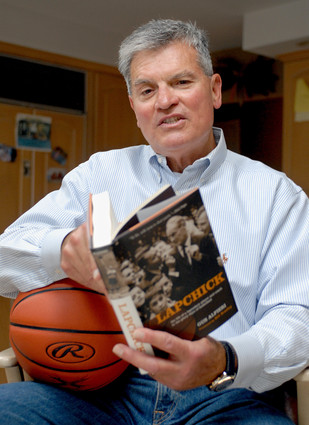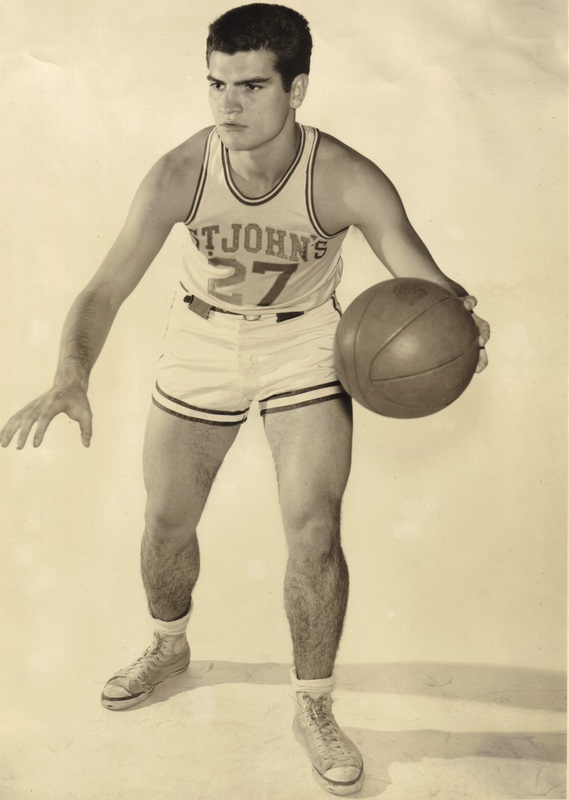|
Gus Alfieri writes his own stuff. This is no small accomplishment for any athlete, any coach, any public figure, who decides to put out a book.
Alfieri won championships as a player and a coach; now he is being honored with the Lapchick Character Award on Thursday in New York. After writing a biography of his mentor, Joe Lapchick, the coach of the Knicks and St. John’s University, Alfieri helped originate the Lapchick Character Award Foundation to honor coaches who demonstrate the good side of sports. In a world of award ceremonies, this annual November luncheon is special. It comes up Thursday at 11:30 AM at the Wyndham New Yorker, catty-corner to Madison Square Garden, hours before the 2K Classic, benefiting the Wounded Warrior Project Coaches for Cancer doubleheader. This is probably the most equitable awards event in any sport. No women are being honored this year but since the first luncheon in 2008 the Lapchick Award has gone to pioneers of women’s basketball -- Pat Summitt of Tennessee and Kay Yow of North Carolina State among others. In 2012 I loved hearing Cathy Rush, who won three national titles with tiny Immaculata in the 1970’s, telling stories about the low budgets, the buses and dicey flight connections, the recruiting. Bootstrappers have great tales to tell. One of the best was Clarence (Big House) Gaines from Winston-Salem State, who died in 2005. His protégé, Earl Monroe will talk about him on Thursday. Another recipient will be John Kresse, who played for Lou Carnesecca at St. John’s and led the College of Charleston into Division I and the NCAA tournament. Alfieri will be honored by his associates in the Lapchick Foundation, a no-brainer, considering this award was his idea. He is the epitome of the student-athlete that all sports schools like to envision. He played for Lapchick, helped win the National Invitation Tournament in his senior year – and kept going, right through a Ph. D. and a long run as coach of St. Anthony’s in Huntington Station, N.Y. Later, Alfieri wrote “Lapchick: The Life of a Legendary Player and Coach in the Glory Days of Basketball,” published in 2006. Like any responsible author, Alfieri included the complex parts but also pointed out how Lapchick came to warn younger players about gambling after being burned by two teammates of Alfieri, and how Lapchick was a pioneer in race relations as a player, hugging his African-American opponent before every barnstorming game. Alfieri is completing his next book, “Once in a Lifetime: A Basketball Coach’s Memoir of a Championship Team,” about his St. Anthony’s team that dominated New York State in the 1970’s. For information: http://www.characteraward.com/
11 Comments
mike from whitestone
11/17/2014 06:32:23 am
Thanks GV for putting this up in lights.
Reply
George Vecsey
11/17/2014 08:10:24 am
Gee, Mike, he seems so easy-going. GV
Reply
mike from whitestone
11/17/2014 09:15:11 am
GV
Sully
1/2/2024 12:48:03 pm
May Gus rest in heaven with the angels as he teaches them the art of winning
Reply
Ken Rood
1/3/2024 12:39:49 am
Coach Alfieri not only taught and coached the right way to play the game of basketball, but also impacted the lives of many players on and off the court- he will be missed 11/20/2014 12:34:54 am
Very nice tribute.
Reply
Ed Martin
11/20/2014 09:39:48 am
Alan, not to change the subject (yes, it is), but your alma mater, Lehigh is about to play its 150th football game against Lafayette at Yankee Stadium. I think even a soccer goalie must have a take.
Reply
11/20/2014 02:57:03 pm
Ed
Reply
Bruce Weir
11/22/2014 02:04:35 pm
Thanks George for posting the tribute to my old St Anthony's HS Basketball Coach Gus Alfieri. As a former player on his teams during the 1970s, I am very happy for Gus to receive the Lapchick Leadership Award. It is especially nice that he received it along with John Kresse. I have fond memories of playing for Gus at St. A's back in the day. I remember he sometimes shared stories about Joe Lapchick, during basketball practices, and it was interesting to learn more about him through reading his book. You had to be tough (mentally and physically) and smart to play for Gus. He emphasized the fundamentals, hard work, team work, and the importance of being prepared for situations that would arise during the game. Gus used many complicated offensive\defensive schemes that befuddled athletically superior opponents and resulted in two NY State HS Championships. He turned a basketball game into a chess match; while many opposing coaches thought they were playing a simple game of checkers.
Reply
PHIL BUTTLING
2/18/2015 02:45:50 pm
I WENT TO ST FRANCIS PREP AND WAS A CLASS MATE OF A GUS, LATIN CLASS BRO BENNY. IS THIS THE SAME GUS ?
Reply
Leave a Reply. |
Categories
All
|











